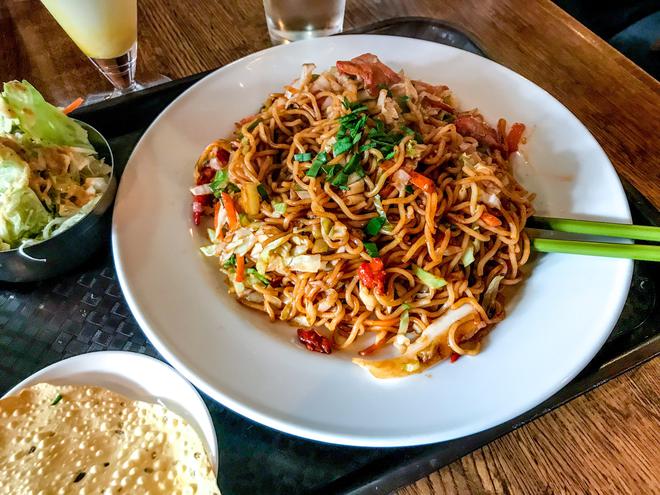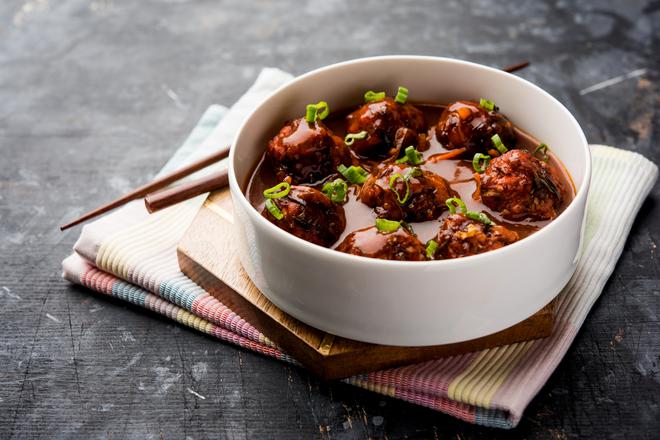No matter which side of the gobi manchurian debate you took after Mapusa in Goa recently banned the dish, which features batter-fried cauliflower coated with a hot and sour sauce, you have to accept that Indo-Chinese cuisine has permeated the nation’s culinary profile as unobtrusively as its legendary flavour enhancer monosodium glutamate (MSG).
Using Indian vegetables and spices with Chinese sauces and thickening agents, Indo-Chinese fusion cuisine has its own local spin-offs like ‘Chinjabi’ and ‘idli manchurian’ that may make no sense to the purist, but are tasty all the same.
“Indo-Chinese food is versatile, as its very basis is born out of two different cuisines and the question of authenticity never arises. Chinese or Manchurian dishes vary from Delhi to the South and Kolkata to the West. The place or the vendor is free to experiment with their take on Indo-Chinese food as long as their diners finds a reason to come back to them,” says Chef Peter Tseng, culinary director of Pricol Gourmet, which runs restaurants across Chennai, Kochi, Pune, Delhi and Coimbatore under multiple brands including Soy Soi, Savya Rasa, Delish and Epicure – Bespoke Catering.
A classic is born
Now based out of Chennai, Peter was born in a Hakka family (“the same as Hakka noodle,” he reminds us), and grew up in Kolkata, among the first places to host Chinese traders and settlers in India during the British Raj.
Gobi manchurian is the vegetarian version of chicken manchurian, a dish that is said to be invented by Nelson Wang, a Mumbai-based Indian restaurateur of Chinese descent in the 1970s. It is a classic of the fusion genre, says Peter. “It is a perfect marriage of the holy trinity of Indian aromatics garlic, ginger and onion spiked with fresh green chillies and flavoured with soya sauce.”
Even though manchurian seems to be ubiquitous in India today, it has an older cousin, known as ‘Calcutta Chinese’, says Chef Puja Sen, operations head at Salt and Pepper Kitchen, Bengaluru. She also runs Madam Hakka, a cloud kitchen that serves Calcutta Chinese food, under Salt and Pepper’s auspices.
“Calcutta [now known as Kolkata] is the birthplace of Indian Chinese food. The Indian Chinese restaurants in Tiretta bazar and Tangra, the two Chinatowns of Calcutta, showcased the cuisine of the immigrants at the time. Indian Chinese food has its own distinct flavours like Schezwan sauce (the Indian spelling of Sichuan), which uses dry red chillies as a substitute for Sichuan peppercorns, besides Manchurian-style cooking, where meat and vegetables are battered and fried in a spicy soy-based sauce with classic Indian ingredients like garlic, ginger, and green chillies,” she says.


Nostalgic value
To draw attention to this culinary heritage, Puja, originally from West Bengal, is holding ‘Un-Manchurian’ a five-course tasting menu dinner that explores Kolkata-centric dishes, in collaboration with The Epicurious Table at Salt and Pepper Kitchen, Bengaluru, on March 2 and 3.
“I grew up eating this thick sludge of chicken asparagus soup at Mandarin, and of course the chilli garlic pepper chicken of Kim Ling. Manchurian was not as popular while I was growing up. But there is no separation of Kolkata food from Indian Chinese, and even today I associate it most with comfort food from home,” she says, recalling her favourite restaurants in the West Bengal capital. On the menu at ‘Un-Manchurian’ will be Tiretti Bazar Mutton Dumplings, Pan-Fried Cantonese Chicken Noodles and Pepper Fried Rice, among others.
What accounts for the popularity of Indo-Chinese food despite the presence of a vibrant indigenous street food culture in the country? “Indo-Chinese food is thought to be quick and easy to prepare and does not involve gourmet ingredients. Much of it is still popular in the form of chow mein, manchurian, manchow soup, singara chow and Kolkata-style chilli chicken, due to its availability in street food shops and pocket-friendly prices,” says Peter.
From the home kitchen
Traditional Chinese recipes have also survived in the homes of the immigrant families. “I have never been to China. The only China we know is Kolkata,” says Peter Chen, a Chinese resident of Chennai, with family links to the Hubei province, where the cooking style goes easy on strong spices and relies mainly on steaming or stewing of ingredients.
Chinese New Year is an important time for the diaspora to gather at home, especially for the New Year’s Eve banquet, says Chen. “We cook at least 10 special dishes on this day. Among the customary items is thinly sliced pork marinated with soya sauce, salt and pepper, that is steamed along with finely chopped vegetables like cabbage and carrot. It is topped with semolina as a binding agent. Then we have a whole steamed fish, that we are not supposed to cut when preparing, to ensure prosperity in the new year,” he says.
Both Peter and Puja list Kolkata-style chili chicken as their favourite, because of its sizzling flavours. There is room for adaptation even among the older generation, says Chef Peter. He adds, “At home, my mother uses Indian chicken masala when making chicken wonton and locally available ‘betki’ fish for steaming.”







